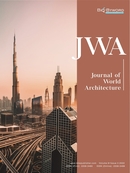Abstract
Urban green space is an effective psychological restoration landscape site. However, Adelaide’s urban green space tends to focus on visual design but neglect non-visual senses. Sensory influence is interactive and has profound and subtle effects on tourists. The purpose of this study was to investigate the relationship between auditory, tactile, and psychological restoration of urban green space from a multi-sensory perspective. This study used quantitative research methods to investigate auditory and tactile-related landscape factors that have a positive effect on restoration. It is expected that this study will contribute to the high-quality restoration of urban green space and promote human health.
References
Badland H, Roberts R, Butterworth I, et al., 2015, How Liveable is Melbourne? Conceptualising and Testing Urban Liveability Indicators: Progress to Date, University of Melbourne, Melbourne.
Australian Bureau of Statistics, 2013, Community Engagement with Nature Conservation, Australia, 2011-12, ABS, Canberra.
Duan YF, Zhang YL, 2017, Construction of the Garden Landscape with Five-Sense Experience in the View of Health Recovery Environment. Journal of Northwest Forestry University, 5881(2): 284-288. DOI: 10.3969/j.issn.1001-7461
Zhao J, Xu W, Ye L, 2018, Effects of Auditory-Visual Combinations on Perceived Restorative Potential of Urban Green Space. Journal of Applied Acoustics, 141: 169-177. DOI: 10.1016/j.apacoust.2018.07.001
Zhou Y, 2017, Study on Tactile Experience in Landscape Design. Digital Publish Platform, 2017(14): 131-133.
Gan Y, Luo T, Breitung W, et al., 2014, Multi-Sensory Landscape Assessment: The Contribution of Acoustic Perception to Landscape Evaluation. The Journal of the Acoustical Society of America, 136(6): 3200-3210.
Rainbolt GN, Benfield JA, Bell PA, 2012, The Influence of Anthropogenic Sound in Historical Parks: Implications for Park Management. Journal of Park and Recreation Administration, 30(4): 53-65.
Yang T, Barnett R, Fan Y, et al., 2019, The Effect of Urban Green Space on Uncertainty Stress and Life Stress: A Nationwide Study of University Students in China. Health & Place, 59: 102199. DOI: 10.1016/j.healthplace.2019.102199
Peschardt KK, Stigsdotter UK, 2013, Associations Between Park Characteristics and Perceived Restorativeness. Landscape and Urban Planning, 112: 26-39. DOI: 10.1016/j.landurbplan.2012.12.013
Kearns R, McCreanor T, Witten K, 2005, Linking Health, Place, and Healthy Communities. Territoris, 5: 189?203.
Wilkinson R, Marmot M, (eds) 2003, Social Determinants of Health: The Solid Facts, World Health Organization, Copenhagen.
Sevenant M, Antrop M, 2009, Cognitive Attributes and Aesthetic Preferences in Assessment and Differentiation of Landscapes. J Environ Manage, 90(9): 2889-2899. DOI: 10.1016/j.jenvman.2007.10.016
Pijanowski BC, Villanueva-Rivera LJ, Dumyahn SL, et al., 2011, Soundscape Ecology: The Science of Sound in the Landscape. BioScience, 61(3): 203-216.
Gardiner A, Perkins C, 2005, “It’s A Sort of Echo...”: Sensory Perception of the Environment as An Aid to Tactile Map Design. British Journal of Visual Impairment, 23(2): 84-91.
Hong JY, Jeon JY, 2013, Designing Sound and Visual Components for Enhancement of Urban Soundscapes. The Journal of the Acoustical Society of America, 134(3): 2026-2036.
Yu Y, 2010, The Research of Landscape Experience, The University of Harbin Institute of Technology, Heilongjiang.
Dhar A, Naeth MA, Jennings PD, et al., 2020, Perspectives on Environmental Impacts and A Land Reclamation Strategy for Solar and Wind Energy Systems. Science of the Total Environment, 718: 134602. DOI: 10.1016/j.scitotenv.2019.134602
Learnihan V, Van Neil KP, Giles?Corti B, et al., 2011, Effect of Scale on the Links Between Walking and Urban Design. Geographical Research, 49(2): 183?191.
